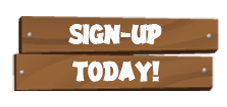(Disclaimer: I’m fully aware that I’m not directly addressing the assignment. However, the beauty of being an “open” student is that I don’t have to worry about demonstrating my direction following skills.)
Vonnegut describes stories as we understand stories: 2 dimensional – 2 axes and 1 plane; points plotted. The story moves forward. This is a book.
Alexander’s Web 2.0 storytelling suggests 4 dimensionality (3d plus shattering the 4th wall)–2 axes and 4 planes. The story has a center and connecting items of significance that take on new significance based on the relation/connection with each other. (Think molecule and valences. Think nucleus, protons, electrons, interconnected and balanced by a complex tension. Although perhaps more accurate in terms of how our minds STORE information, the molecule model is less able to make meaning for us. (Perhaps the very purpose of story.) IRL we make meaning of events that –though occurring on a linear temporal plane–are stored in a 2-axes- 4-plane space and which are then re- linearized and often wholly reconfigured in order to make sense of those events. This is hard work. (In some cases, the work of a lifetime.) Traditional stories, to some extent, do the work for us. Engaging with a Web 2.0 story that is fully embracing the possibilities of the medium/media might demand a level of cognitive commitment that most people don’t have time for. Think about it:
Opening scene where “reader” encounters character A and character B sifting through the wreckage of character A’s home. Any home in its wrecked state looks mostly like trash: slabs of broken drywall, clothing tangled around pipes and chair legs. Photographs and other standard plot driving items are interspersed along with less obvious items like a can of French cut green beans that looks like it’s “fresh” from the grocery store shelf.
Every bean (character, quality, object) suggests a possible path for the story, many of which may/will/must connect with others in manifold ways.
We’re programmed as readers to read from page one to the end. Our breaks are clearly marked off via periods, paragraphs, and chapters. There is comfort in this. (To experience reading without this comfort, try Gabriel Garcia Marquez’s Autumn of the Patriarch.)
Perhaps Web 2.0 storytelling will change our programming and allow us to let go of the compulsion (with our fiction and our lives) to possess, consume and understand everything, which at its best is an exercise in futility, at its worst is a sure path to madness, and at its average is a trip to the pharmacy for some mediocre though useful drugs.
Recap of Daily Creates:
TDC141 Connection
TDC146 Destruction
TDC147 Rocks/Water/Clouds












